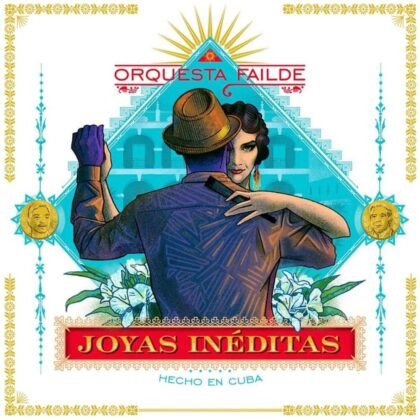
Orquesta Failde
Havana, May 31 (RHC) –Billboard magazine published a review of ‘Joyas inéditas’, the latest album by Cuba’s Orquesta Failde, available since May 28th on the magazine’s digital platform.
‘Joyas inéditas’ is included in the First Stream Latin --a compilation of the best new Latin songs, albums and videos recommended by the Billboard Latin editors.
The review begins by stating that ‘It takes guts to use the word “Joyas” (Gems, or Jewels) in an album title. But Cuba’s Orquesta Failde’s “Gems” are truly precious.
They magazine editors wrote: ‘This Cuban big band, led by flute player Ethiel Failde, plays vintage danzón, inspired by Failde’s ancestor Miguel Failde, known as the creator of the classic Cuban dance.
The five-track EP features previously unreleased tracks penned by Miguel and produced by Ethiel with a sound that is achingly elegant and lovely.’
The prestigious magazine further states: ‘Joyas is intricate and seductive, with unexpected rhythmic changes that force the listener and the dancer to take notes. The only sung track is saved for the final “Rompiendo la Rutina.” Featuring Cuban singer Omara Portuonda on vocals, it was actually written by Aniceto Díaz, in 1929.
This is not the first time that the Diva of Buena Vista Social Club collaborates with Orquesta Failde. Young musicians with the band fondly call the 90-year-old Omara ‘madrina’ or godmother, after many years of collaboration both in musical productions and onstage here in Cuba and also in Mexico and the United States.
Ethiel describes her as a jewel –the true gem of Cuban culture. ‘Every second we spend with her is a master class and a party at the same time. She is funny as she is professional,’ said the young leader of Orquesta Failde.
Produced by Cuba’s EGREM label with support from the Culture Office in Matanzas province, the album covers almost three decades of musical creation by Miguel Failde (between 1852 and 1921). This way, tunes like Nievecita, written in 1883, El naranjero, from 1895, as well as Cuba libre and A La Habana me voy, written in 1902 and 1903, respectively, serves to appreciate the evolution of Cuban danzón at the turn of the century.

